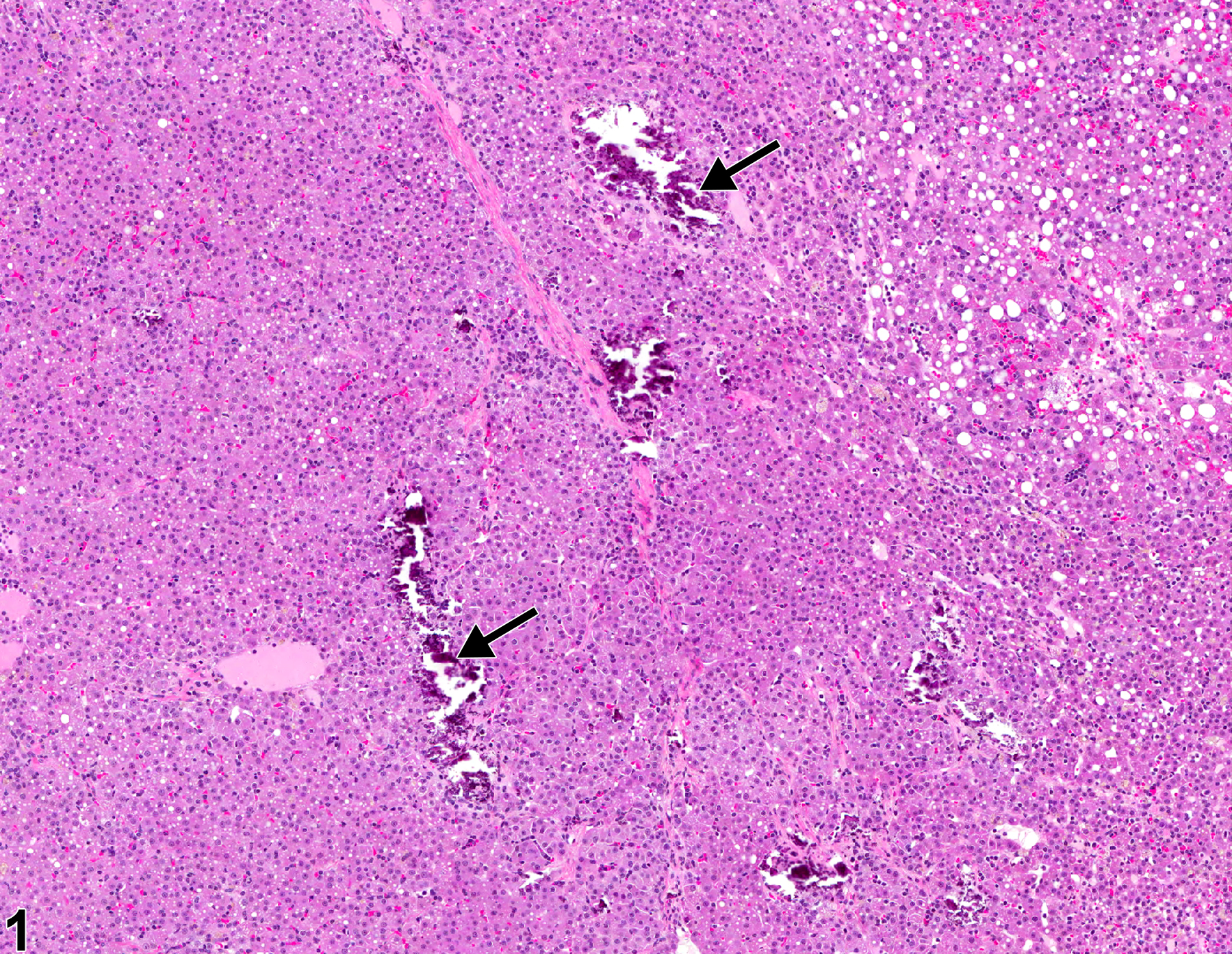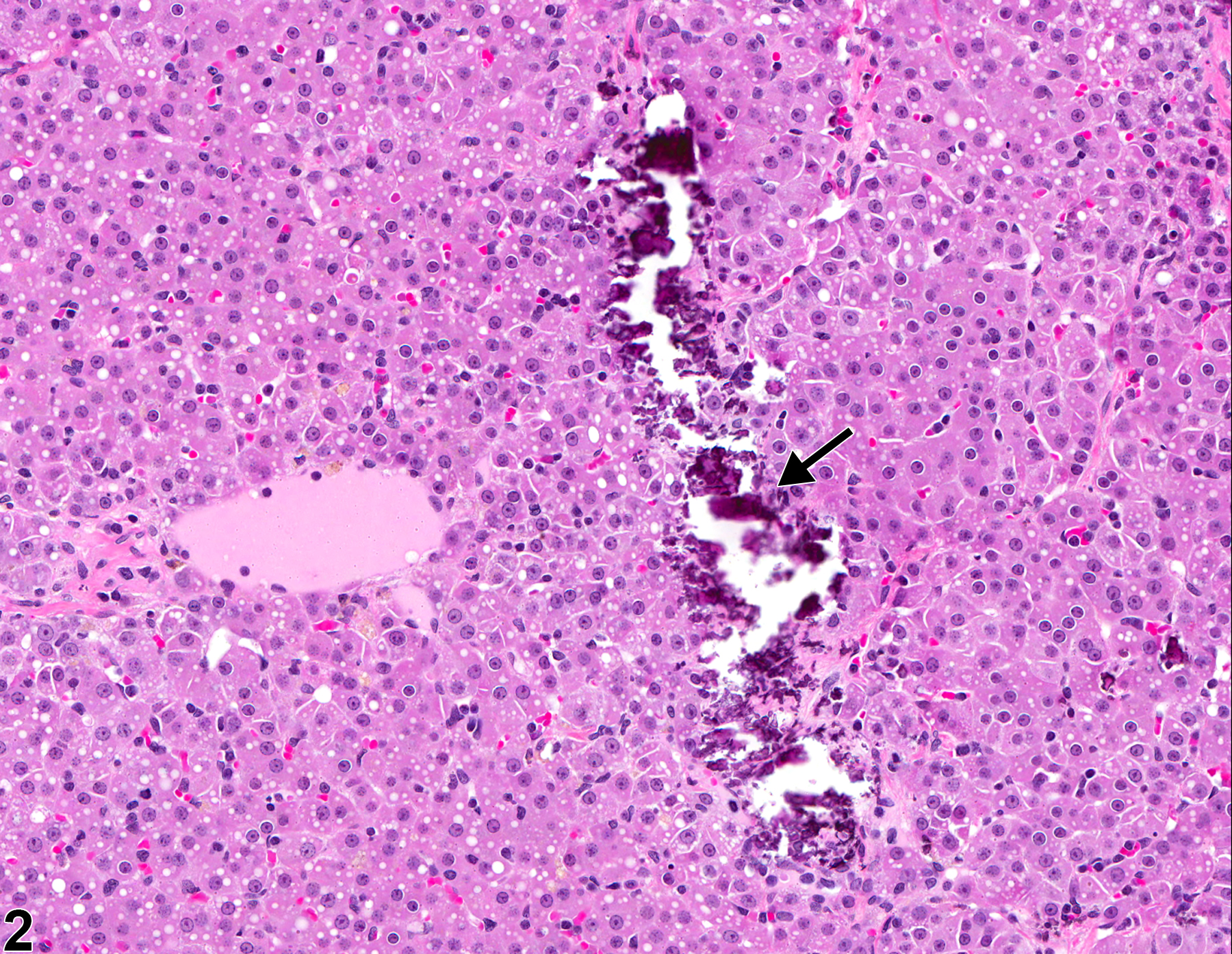Endocrine System
Adrenal Gland - Mineralization
Narrative
Mineralization is characterized as variably sized, discrete aggregates of finely to coarsely granular dark basophilic material (Figure 1 and Figure 2) that are scattered through the adrenal parenchyma, often adjacent to or within areas of fibrosis, degeneration, necrosis, hemorrhage, and/or thrombosis.
Frith CH, Botts S, Jokinen MP, Eighmy JJ, Hailey JR, Morgan SJ, Chandra M. 2000. Non-proliferative lesions of the endocrine system in rats, E-1. In: Guides for Toxicologic Pathology. STP/ARP/AFIP, Washington, DC.
Full Text: https://www.toxpath.org/docs/SSNDC/EndocrineNonprolifRat.pdfHamlin MH, Banas DA. 1990. Adrenal gland. In: Pathology of the Fischer Rat: Reference and Atlas (Boorman GA, Eustis SL, Elwell MR, Montgomery CA, MacKenzie WF, eds). Academic Press, San Diego, 501-518.
Abstract: https://www.ncbi.nlm.nih.gov/nlmcatalog/9002563National Toxicology Program. 1999. NTP TR-481. Toxicology and Carcinogenesis Studies of Oleic Acid Diethanolamine Condensate (CAS No. 93-83-4) in F344/N Rats and B6C3F1 Mice (Dermal Studies). NTP, Research Triangle Park, NC.
Abstract: https://ntp.niehs.nih.gov/go/9764National Toxicology Program. 2007. NTP TR-543. Toxicology and Carcinogenesis Studies of α-Methylstyrene (CAS No. 98-83-9) in F344/N Rats and B6C3F1 Mice (Inhalation Studies). NTP, Research Triangle Park, NC.
Abstract: https://ntp.niehs.nih.gov/go/28010
Adrenal gland, Cortex - Mineralization in a male F344/N rat from a chronic study. There are multiple foci of coarsely granular, dark basophilic material in the cortex (arrows).



